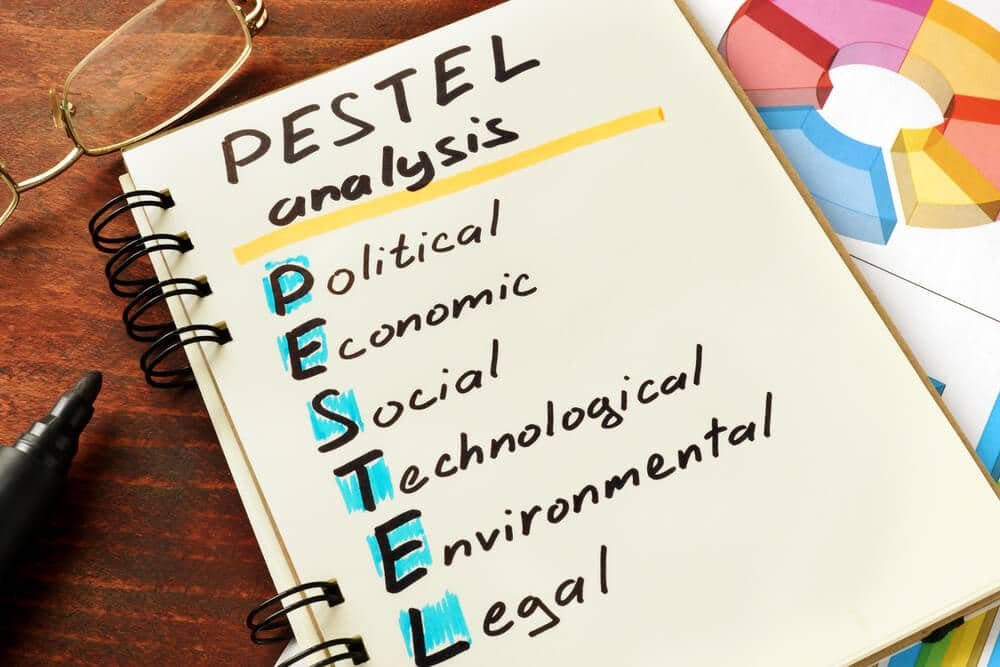PESTELS Analysis : Notes, Common Exam Questions and Answers Guide, Online Quizzes and Activities for Business Studies Grade 12 Revision Studies, from Macro Environment: Business Strategies section. This content is under Term 1 as per the CAPS Curriculum.
On this page, grade 12 students learn and study for revision using REAL EXAM questions based on PESTELS Analysis topic, using activities and engaging quizzes. Every South African grade 12 learner who wants to pass Business Studies subject with a distinction, needs to go through the valuable study resources on this page.
PESTELS Analysis Business Studies Grade 12
What is PESTEL Analysis
Definition: PESTEL analysis is a strategic management tool used to analyze the external macro-environmental factors that may affect an organization. It involves identifying and analyzing factors such as political, economic, social, technological, environmental, and legal trends that can have a significant impact on the organization’s operations and its strategic decisions.
Examples of PESTEL factors include changes in government regulations and policies, shifts in consumer behavior and demographics, advancements in technology, natural disasters and environmental factors, and changes in economic conditions such as inflation and unemployment rates.
The following are the steps involved in conducting a PESTEL analysis:
- Identify the PESTEL factors: Make a list of the external macro-environmental factors that may affect the organization.
- Gather relevant information: Conduct research and gather relevant data on each PESTEL factor.
- Analyze the impact: Evaluate how each PESTEL factor may affect the organization’s operations, customers, suppliers, competitors, and other stakeholders.
- Prioritize the factors: Determine which PESTEL factors are the most significant and likely to have the greatest impact on the organization.
- Develop a strategic plan: Based on the PESTEL analysis, develop a strategic plan to address the identified opportunities and threats and achieve the organization’s objectives.
By conducting a PESTEL analysis, organizations can gain valuable insights into the external factors that may impact their operations and develop a strategic plan to address these factors, adapt to changes in the environment, and stay competitive.
PESTEL Factor Examples in South Africa
Here are some examples of PESTEL factors that can impact businesses in South Africa:
Political Factors:
- Political stability and government policies
- Corruption and bureaucracy
- Labor laws and regulations
- Taxation policies
- Trade agreements and tariffs
Economic Factors:
- Inflation rates and economic growth
- Exchange rates and currency fluctuations
- Unemployment rates and labor market conditions
- Interest rates and credit availability
- Consumer confidence and spending patterns
Social Factors:
- Demographics and population trends
- Cultural attitudes and beliefs
- Lifestyle changes and consumer preferences
- Health and education levels
- Income distribution and poverty rates
Technological Factors:
- Technological advancements and innovation
- Digitalization and automation
- Intellectual property rights and patents
- Internet connectivity and infrastructure
- Cybersecurity and data protection
Environmental Factors:
- Climate change and natural disasters
- Environmental regulations and policies
- Resource depletion and waste management
- Sustainability and corporate social responsibility
- Energy efficiency and renewable energy
Legal Factors:
- Regulatory compliance and legal frameworks
- Intellectual property laws and regulations
- Employment laws and regulations
- Health and safety laws and regulations
- Consumer protection laws and regulations.






